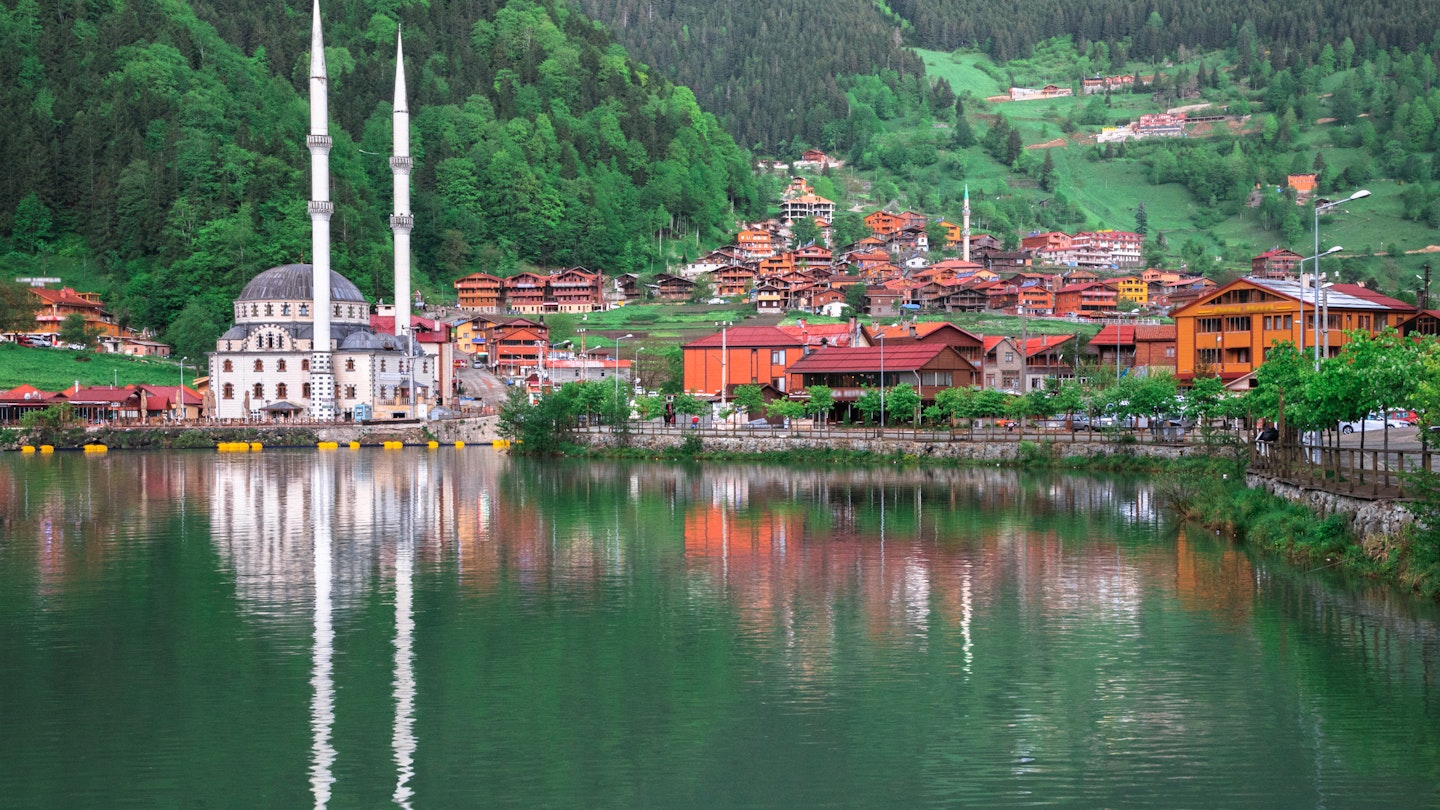With mountains, deserts, seashores, and cities among its diverse offerings, there’s almost always a great place to explore in Turkey, no matter the time of year.
The country’s range of landscapes also means great regional variation in its traditional cuisine. Small towns and villages often host colorful festivals around the harvest period of their local crops, whether olives, grapes, artichokes, or apricots.
It’s important to be aware of the two most significant Muslim holidays, Ramazan Bayramı (Eid al-Fitr) and Kurban Bayramı (Eid al-Adha), which follow the lunar calendar, leading to slightly shifting dates each year. These holidays see a surge in travel, so expect larger crowds and potentially increased prices. Certain small businesses may also close during these periods, similar to the rush seen around major US holidays.
High Season: June to August
Best for Beaches, Black Sea Highlands, and Outdoor Events
Sun seekers, both foreign and domestic, flock to Turkey’s Aegean and Mediterranean coasts during the summer. Thus, crowds and costs elevate along with the temperatures. Planning ahead is essential in popular destinations, where lively outdoor festivals featuring performances by the seaside or in historic amphitheaters abound. For those not on the water, many regions, including Istanbul and Cappadocia, can be uncomfortably hot, but this period is excellent for exploring the cooler green highlands of the Black Sea mountains.
Shoulder Season: April to May, September to October
Best for Sightseeing, Hiking, and Cultural Events
Spring and fall are pleasant times of year across the country, often featuring warm enough temperatures for outdoor dining and leisurely strolls, without the oppressive heat. Major cities like Istanbul typically host a lively calendar of arts and cultural events. In fall, it remains warm enough to swim, particularly along the Mediterranean coast, offering a relaxed atmosphere after the school holidays conclude.
Low Season: November to March
Best for Skiing and Finding Bargains Elsewhere
Winter marks high season in ski-resort areas, yet other regions offer good deals and fewer visitors. The weather can be dreary, but Turkey’s numerous museums provide ample indoor activities, and its hamams (Turkish bathhouses) are perfect for staying warm. Meals in a meyhane (tavern) or ocakbaşı (grill house) create enjoyable evenings. Although some coastal accommodations and restaurants may close for the season, the weather remains relatively mild.
Monthly Highlights
January
Istanbul is generally cold, gray, and wet, while coastal resorts are often deserted. However, ski season is in full swing on Mt. Erciyes in Cappadocia, and other key regions such as Erzurum and Kars. Additionally, the Black Sea anchovies (hamsi) are particularly delicious and plentiful.
February
As signs of spring emerge along Turkey’s southern coast, the Datça Almond Blossom Festival adds a delightful touch to the still-chilly weather.
March
Kurdish communities celebrate Newroz, marking spring’s arrival. Istanbul begins to thaw, while sunny Mediterranean coast days are perfect for light outdoor activities.
April
Tulips bloom in parks across Istanbul, inviting outdoor explorations amid occasional rain. The month features hiking opportunities along southern routes such as the Lycian Way and events like Anzac Day.
May
With bustling sidewalk cafes and warm weather, May is prime for visiting both urban and rural areas across Turkey. The atmosphere is lively and inviting.
June
The summer festival season kicks off with outdoor classical concerts and increasing beach activities, inviting visitors to enjoy both culture and natural beauty.
July
Visitors can find solace in the green high pastures (yayla) of the Black Sea region to escape the sweltering heat, enjoying events that celebrate music and culture.
August
With bustling beaches, consider escaping to a blue cruise on a gulet (traditional wooden yacht) or hiking in the Kaçkar Mountains, which remain snow-capped most of the year.
September
As the summer holiday crowd begins to dissipate, Istanbul comes alive again with a packed cultural calendar, showcasing its vibrant arts scene.
October
Cappadocia and coastal regions remain warm, while Istanbul enjoys more pleasant days as crowds lighten, making this a favorable month for exploring.
November
The rainy season sets in, igniting an interest in museums throughout the country. This month highlights the seasonal abundance of pomegranates.
December
The fairy chimneys of Cappadocia look particularly magical under snow. Events in Konya commemorate Mevlana, the beloved Sufi mystic known as Rumi.





